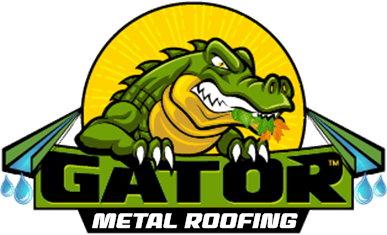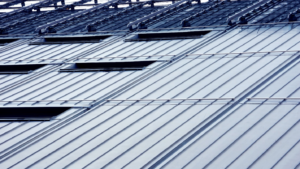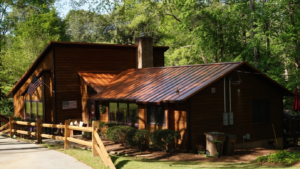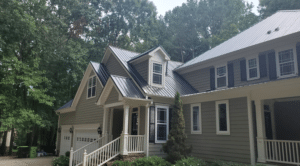Metal roof sloping is a cost-effective strategy that many homeowners opt for. Roof sloping helps homeowners in areas with heavy snowfall or rain avoid the accumulation of water or snow on their roofs, thus preventing structural damage caused due to heavy snow accumulation or water leaks on the structure.
If you are considering installing a metal roof, understanding metal roof sloping in detail can help you make the best choice for your home and avoid issues later on. Keep reading for everything there is to know about metal roof sloping from the experts at the best metal roofing company.
What Is Metal Roof Sloping?
Installing a metal roof slope with a specific pitch or angle is called metal roof sloping. The slope can be defined as a ratio of how much the roofing surface falls or rises over a certain distance. Experts use ratios to indicate the metal roof slopes. These ratios convey the roofing pitch —calculated by dividing the roof’s vertical rise by the horizontal span.
Below are some of the most frequently used slopes:
- 3:12
- 1/2:12
- 1/4:12
What Happens When the Metal Roof Sloping Is Low?
A slope that has a ratio lower than 3:12 is considered a low slope, and this ratio is the minimum requirement for many metal roofing products. Many different roofing materials, like asphalt shingles, follow similar requirements.
However, roof slopes lower than the 3:12 ratio always necessitate the application of bitumen — a roofing sealant made from petroleum. Without this sealant, metal roofing with a ratio lower than 3:12 can suffer damage from leaks and snow accumulation.
Steep Slope or Low Slope: Which One to Choose?
When choosing metal roof sloping, property owners may be given the choice of selecting between a steep and a low slope. Individuals with little knowledge about these slopes may have difficulty determining which one would be ideal for their roofing. Here is more information on steep and low-slope roofing to help you decide which one to choose:
Steep Slope Roofing
A roof with a steeper slope has a ratio above 3:12. Higher snowfall locations benefit from steeper slopes, lowering the chance of water puddles on the roof. This slope is highly recommended for residential properties since these are more aesthetically pleasing.
Low Slope Roofing
A roof with a slope lower than 3:12 is considered a low-slope roof. These roofs are usually used in commercial applications as they utilize fewer materials than steep slope metal roofing systems, which helps minimize material costs. Another reason these are preferred for commercial buildings is that low-slope roofing is simpler to construct on larger buildings.
Final Verdict
Choosing the ideal slope for your roofing is critical to ensure the lifespan of your roof and avoid water leaks or snow buildups on your roofing system. If you have any more queries about metal roof sloping, contact the leading roofers in North Carolina at Gator Metal Roofing. We can help you choose the best metal roofing system for your property. Contact us now for more details!










